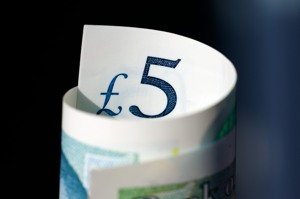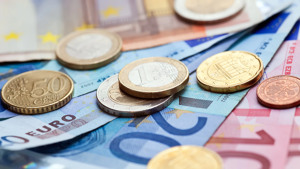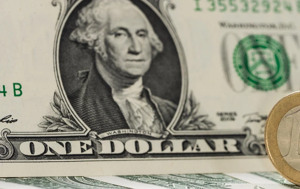Tavex uses cookies to ensure website functionality and improve your user experience. Collecting data from cookies helps us provide the best experience for you, keeps your account secure and allows us to personalise advert content. You can find out more in our cookie policy.
Please select what cookies you allow us to use
Cookies are small files of letters and digits downloaded and saved on your computer or another device (for instance, a mobile phone, a tablet) and saved in your browser while you visit a website. They can be used to track the pages you visit on the website, save the information you enter or remember your preferences such as language settings as long as you’re browsing the website.
| Cookie name | Cookie description | Cookie duration |
|---|---|---|
| tavex_cookie_consent | Stores cookie consent options selected | 60 weeks |
| tavex_customer | Tavex customer ID | 30 days |
| wp-wpml_current_language | Stores selected language | 1 day |
| AWSALB | AWS ALB sticky session cookie | 6 days |
| AWSALBCORS | AWS ALB sticky session cookie | 6 days |
| NO_CACHE | Used to disable page caching | 1 day |
| PHPSESSID | Identifier for PHP session | Session |
| latest_news | Helps to keep notifications relevant by storing the latest news shown | 29 days |
| latest_news_flash | Helps to keep notifications relevant by storing the latest news shown | 29 days |
| tavex_recently_viewed_products | List of recently viewed products | 1 day |
| tavex_compare_amount | Number of items in product comparison view | 1 day |
| Cookie name | Cookie description | Cookie duration |
|---|---|---|
| chart-widget-tab-*-*-* | Remembers last chart options (i.e currency, time period, etc) | 29 days |
| archive_layout | Stores selected product layout on category pages | 1 day |
| Cookie name | Cookie description | Cookie duration |
|---|---|---|
| cartstack.com-* | Used for tracking abandoned shopping carts | 1 year |
| _omappvp | Used by OptinMonster for determining new vs. returning visitors. Expires in 11 years | 11 years |
| _omappvs | Used by OptinMonster for determining when a new visitor becomes a returning visitor | Session |
| om* | Used by OptinMonster to track interactions with campaigns | Persistent |
| Cookie name | Cookie description | Cookie duration |
|---|---|---|
| _ga | Used to distinguish users | 2 years |
| _gid | Used to distinguish users | 24 hours |
| _ga_* | Used to persist session state | 2 years |
| _gac_* | Contains campaign related information | 90 days |
| _gat_gtag_* | Used to throttle request rate | 1 minute |
| _fbc | Facebook advertisement cookie | 2 years |
| _fbp | Facebook cookie for distinguishing unique users | 2 years |

Currencies symbolise the economic strength and global influence of their respective nations. Here’s an in-depth look at the world’s strongest currencies, their values, and what drives their dominance.
1. Kuwaiti Dinar (KWD) 🇰🇼
The Kuwaiti Dinar, based in the middle east, is the strongest currency in the world
This reflects Kuwait’s vast oil reserves and prudent economic management.
Factors Driving Strength:
- Oil Wealth: Kuwait’s economy is heavily reliant on its oil exports, which account for a significant portion of its GDP and currency backing.
- Economic Stability: The government’s strategic investments and fiscal policies ensure long-term stability.
- Strong Peg: The KWD is pegged to a basket of international currencies, minimising volatility.
Read more on the topic here: What is the most expensive currency in the world?
Global Position
- 1 USD equals approximately 0.30 KWD, making it the highest-valued currency globally.
2. Bahraini Dinar (BHD) 🇧🇭
The Bahraini Dinar is known for its strength, supported by Bahrain’s oil-driven economy and its pegging to the US Dollar.
Reasons for Strength:
- Oil Exports: Bahrain’s economy thrives on its oil industry, providing a strong foundation for its currency.
- Stable Peg: The fixed exchange rate against the USD ensures minimal fluctuations.
Exchange Rate
- 1 USD equals around 0.38 BHD.
3. Omani Rial (OMR) 🇴🇲
The Omani Rial is uniquely divided into 1,000 baisa, reflecting Oman’s traditional economic approach.
Key Features:
- Oil Revenue: Oman’s substantial oil reserves and exports provide robust support for its currency.
- Economic Diversification: Efforts to diversify the economy into non-oil sectors add resilience to the Rial.
Value
- 1 USD equals approximately 0.38 OMR, making it one of the most valuable currencies.
4. Jordanian Dinar (JOD) 🇯🇴
The Jordanian Dinar holds its value through a stable pegging system with the US Dollar, ensuring consistent strength.
Economic Stability:
- Jordan’s controlled inflation and disciplined monetary policies bolster its currency.
Exchange Rate:
- 1 USD equals around 0.71 JOD.
5. British Pound Sterling (GBP) 🇬🇧

The Pound Sterling used by the United Kingdom is the oldest currency still in use, renowned for its stability and global influence.
Factors Contributing to Strength:
- Historic Significance: A currency with a rich history, symbolising trust and reliability.
- Global Trade: The GBP accounts for 12.8% of daily forex trades, making it the 4th most traded currency.
Exchange Rate
- 1 USD equals approximately 0.75 GBP.
6. Gibraltar Pound (GIP) 🇬🇮
The Gibraltar Pound is pegged to the British Pound, ensuring steady value and widespread acceptance among the global economy.
Key Features:
- Legal Tender: Both GIP and GBP are used interchangeably in Gibraltar.
Value
- 1 USD equals around 0.81 GIP.
7. Cayman Islands Dollar (KYD) 🇰🇾
The Cayman Islands Dollar benefits from the region’s reputation as a tax haven for global corporations and high-net-worth individuals.
Economic Backbone:
- The financial services sector significantly contributes to the KYD’s strength.
Exchange Rate
- 1 USD equals approximately 0.83 KYD.
8. Euro (EUR) 🇪🇺

The Euro represents economic unity among 19 European nations, symbolising strength in diversity.
Global Role:
- The EUR/USD pair is the most traded forex pair, reflecting its significance in global markets.
Exchange Rate
- 1 USD equals around 0.90 EUR.
9. Swiss Franc (CHF) 🇨🇭
The Swiss Franc is a safe-haven currency, trusted during economic uncertainty.
Reasons for Strength:
- Low Debt Levels: Switzerland’s fiscal policies ensure stability.
- Neutrality: Its political neutrality adds to its reliability.
Value
- 1 USD equals approximately 0.98 CHF.
10. United States Dollar (USD) 🇺🇸

The US Dollar is the backbone of the global financial system and the primary reserve currency.
Global Dominance:
- The USD is involved in 88.3% of daily forex transactions.
- US dollar notes are widely accepted which facilitates international trade.
Exchange Rate
- 1 USD equals exactly 1 USD.
11. Canadian Dollar (CAD) 🇨🇦
Known as the Loonie, the Canadian Dollar is a preferred currency for forex traders and central banks.
Economic Strength:
- Resource Wealth: Canada’s natural resources, including oil and minerals, underpin the CAD’s value.
- Stability: Canada’s political and economic stability attracts foreign investment.
Value
- 1 USD equals around 1.31 CAD.
12. Libyan Dinar (LYD) 🇱🇾
The Libyan Dinar is supported by Libya’s oil wealth despite ongoing political challenges.
Unique Features:
- Subdivided into 1,000 dirhams, unlike most currencies that use 100 subunits.
Exchange Rate
- 1 USD equals approximately 1.41 LYD.
13. Brunei Dollar (BND) 🇧🇳
The Brunei Dollar is interchangeable with the Singapore Dollar, reflecting close economic ties between the nations.
Economic Support:
- Brunei’s wealth from oil and gas exports provides a strong foundation.
Value
- 1 USD equals around 1.35 BND.
14. Singapore Dollar (SGD) 🇸🇬
The Singapore Dollar represents Singapore’s thriving economy and status as a global financial hub.
Key Features:
- Accepted in Brunei under a unique interchangeability agreement.
Forex Position:
- The SGD is the 13th most traded currency globally, accounting for 1.8% of daily forex trades.
Exchange Rate:
- 1 USD equals approximately 1.36 SGD.
15. Australian Dollar (AUD) 🇦🇺
The Australian Dollar is widely traded and tied to Australia’s strong commodity exports.
Economic Strengths:
- Commodities Link: Tied to resources like gold and iron ore, providing stability.
- High Interest Rates: Attracts forex traders seeking high returns.
Exchange Rate
- 1 USD equals around 1.45 AUD.
16. New Zealand Dollar (NZD) 🇳🇿
The New Zealand Dollar is a reflection of the nation’s economic resilience and global trade influence.
Key Drivers:
- Political Stability: Transparent governance fosters economic growth.
- High Interest Rates: The Reserve Bank of New Zealand attracts investors with competitive rates.
- Diversified Economy: Sectors like agriculture, technology, and tourism contribute to steady GDP growth.
Value
- 1 USD equals approximately 1.52 NZD. Despite ranking 16th, it remains one of the top 10 most traded currencies globally.
Conclusion
From the Kuwaiti Dinar to the New Zealand Dollar, each of these currencies reflects its nation’s economic policies, trade influence, and political stability. Understanding these currencies not only highlights their strengths but also offers insights into the global financial landscape.

















